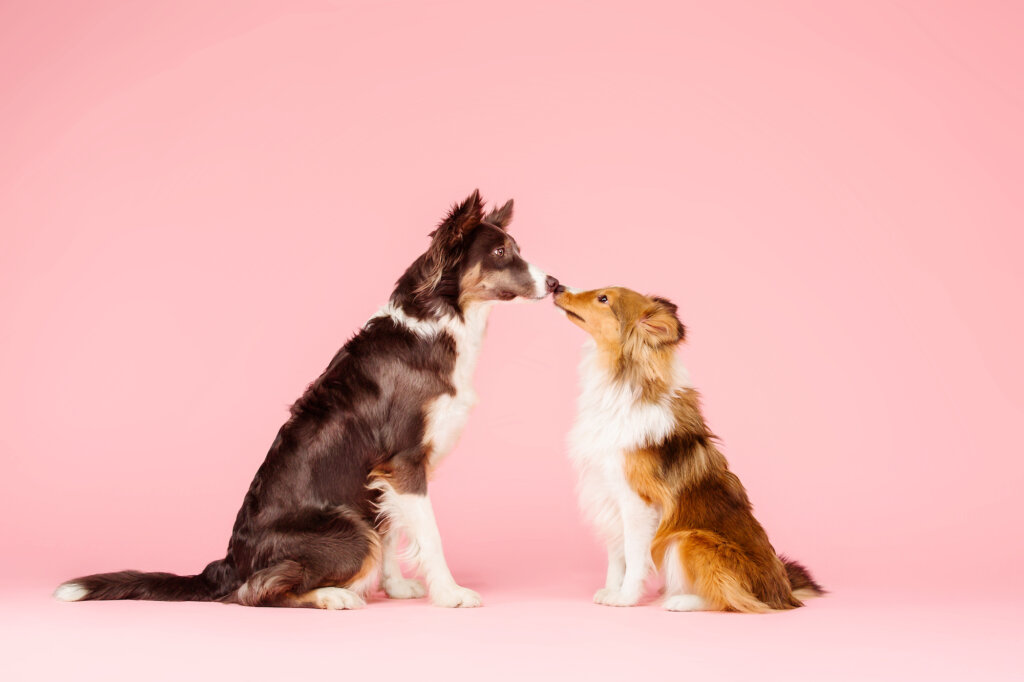Four Differences Between Human and Animal Sexuality


Reviewed and approved by the psychologist Sergio De Dios González
Human and animal sexuality have certain elements in common, but also many differences. In fact, it couldn’t be otherwise, taking into account that human beings are immersed in culture and civilization, two symbolic realities that are absent in the animal world.
This means that human sexuality is historical, unlike in the animal world. Therefore, the way we think of sex and the way in which we practice it depends on the context. For example, in the 1920s, a kiss in a movie scene was removed, as it was considered pornographic. Today, such a scene provokes no such reaction.
Human sexuality isn’t genitality or pornography, although it’s common for these concepts to be confused. Moreover, there are certain taboos and elements that we share with animals. However, the difference between human sexuality and that of other species lies mainly in the four aspects that we’ll list below.
“One can’t write of love while making love.”
-Colette-

1. No ‘heat’
One of the big differences between the sexuality of humans and animals lies in the process of ‘heat’. Other species only have sexual intercourse at specific times. On the other hand, humans have sex and express their sexuality without this organic restriction.
Animals never have sex when the female is pregnant. In humans, there’s no such limitation. Similarly, other species don’t mate when the female is menstruating. In humans (and a few primates) this pattern isn’t present.
In fact, human sexuality is far more active and extensive. It doesn’t require specific times or places. The only required condition is that sexual desire and the anatomical and physiological capacity to achieve copulation are present.
2. Humans have many more erogenous zones
While some mammals, especially primates, derive pleasure from physical contact and actions such as rubbing and licking, only humans have erogenous zones as such. These are areas of the body with really rich nerve endings, which provide pleasant sensations associated with sexuality.
Such zones are located on the lips, earlobes, nipples, breasts, and genital organs. Consequently, human sexuality can take many forms and allows for a great deal of sexual play. In effect, pleasure goes beyond the genitals.
However, some animals also exhibit sexual behaviors associated with erogenous zones. For instance, short-nosed fruit bats engage in oral sex. This is believed to prolong copulation and make fertilization more efficient. Brown bears in captivity also engage in oral sex, but it’s not clear whether they maintain this practice in the wild.
3. Behavior after orgasm
Another difference between animal and human sexuality lies in the behavior after orgasm. This is far more noticeable in females. For example, once copulation ends, female primates return to their normal activities, as if nothing has happened. The same is true of all animals in general.
This isn’t the same for humans, even when it comes to casual sex. Both men and women seem to need a kind of transition between intercourse and normal daily life. As a rule, within the framework of a couple, expressions of affection or even sadness and insecurity may appear. It all depends on the relationship.

4. Human sexuality lasts longer
The fourth difference between human and animal sexuality lies in its validity in terms of age. In old animals, there’s usually no sexual behavior, especially in females. Indeed, once they’ve finished their reproductive stage, most die. Others last a few more years, but their sexuality is practically nil.
In humans it’s different. A person can be sexually active even in old age. This applies to both women and men. Although there’s less sexual activity over the years, it doesn’t really have to stop.
Finally, human sexuality doesn’t have a strictly reproductive purpose. It’s traversed by symbolic elements that give it meaning for the individual and their culture. In effect, it implies the satisfaction of an instinct, but also a need for connection and transcendence.
Human and animal sexuality have certain elements in common, but also many differences. In fact, it couldn’t be otherwise, taking into account that human beings are immersed in culture and civilization, two symbolic realities that are absent in the animal world.
This means that human sexuality is historical, unlike in the animal world. Therefore, the way we think of sex and the way in which we practice it depends on the context. For example, in the 1920s, a kiss in a movie scene was removed, as it was considered pornographic. Today, such a scene provokes no such reaction.
Human sexuality isn’t genitality or pornography, although it’s common for these concepts to be confused. Moreover, there are certain taboos and elements that we share with animals. However, the difference between human sexuality and that of other species lies mainly in the four aspects that we’ll list below.
“One can’t write of love while making love.”
-Colette-

1. No ‘heat’
One of the big differences between the sexuality of humans and animals lies in the process of ‘heat’. Other species only have sexual intercourse at specific times. On the other hand, humans have sex and express their sexuality without this organic restriction.
Animals never have sex when the female is pregnant. In humans, there’s no such limitation. Similarly, other species don’t mate when the female is menstruating. In humans (and a few primates) this pattern isn’t present.
In fact, human sexuality is far more active and extensive. It doesn’t require specific times or places. The only required condition is that sexual desire and the anatomical and physiological capacity to achieve copulation are present.
2. Humans have many more erogenous zones
While some mammals, especially primates, derive pleasure from physical contact and actions such as rubbing and licking, only humans have erogenous zones as such. These are areas of the body with really rich nerve endings, which provide pleasant sensations associated with sexuality.
Such zones are located on the lips, earlobes, nipples, breasts, and genital organs. Consequently, human sexuality can take many forms and allows for a great deal of sexual play. In effect, pleasure goes beyond the genitals.
However, some animals also exhibit sexual behaviors associated with erogenous zones. For instance, short-nosed fruit bats engage in oral sex. This is believed to prolong copulation and make fertilization more efficient. Brown bears in captivity also engage in oral sex, but it’s not clear whether they maintain this practice in the wild.
3. Behavior after orgasm
Another difference between animal and human sexuality lies in the behavior after orgasm. This is far more noticeable in females. For example, once copulation ends, female primates return to their normal activities, as if nothing has happened. The same is true of all animals in general.
This isn’t the same for humans, even when it comes to casual sex. Both men and women seem to need a kind of transition between intercourse and normal daily life. As a rule, within the framework of a couple, expressions of affection or even sadness and insecurity may appear. It all depends on the relationship.

4. Human sexuality lasts longer
The fourth difference between human and animal sexuality lies in its validity in terms of age. In old animals, there’s usually no sexual behavior, especially in females. Indeed, once they’ve finished their reproductive stage, most die. Others last a few more years, but their sexuality is practically nil.
In humans it’s different. A person can be sexually active even in old age. This applies to both women and men. Although there’s less sexual activity over the years, it doesn’t really have to stop.
Finally, human sexuality doesn’t have a strictly reproductive purpose. It’s traversed by symbolic elements that give it meaning for the individual and their culture. In effect, it implies the satisfaction of an instinct, but also a need for connection and transcendence.
All cited sources were thoroughly reviewed by our team to ensure their quality, reliability, currency, and validity. The bibliography of this article was considered reliable and of academic or scientific accuracy.
- Diamond, J. (2020). ¿Por qué es divertido el sexo?: la evolución de la sexualidad humana. Debate.
- Ortega, V., Sierra Freire, JC., Zubeidat, I. (2004). Evaluación de algunos factores determinantes del deseo sexual: estado emocional, actitudes sexuales y fantasías sexuales. Análisis y modificación de conducta, 30(129),105-130. https://dialnet.unirioja.es/servlet/articulo?codigo=856927
- Ramírez Márquez, D. (2018). Experimentación en la sexualidad a través de un objeto que se adapta a la mano para estimular zonas erógenas en el cuerpo – Sexsations. Pontificia Universidad Javeriana. https://repository.javeriana.edu.co/handle/10554/39027
This text is provided for informational purposes only and does not replace consultation with a professional. If in doubt, consult your specialist.







